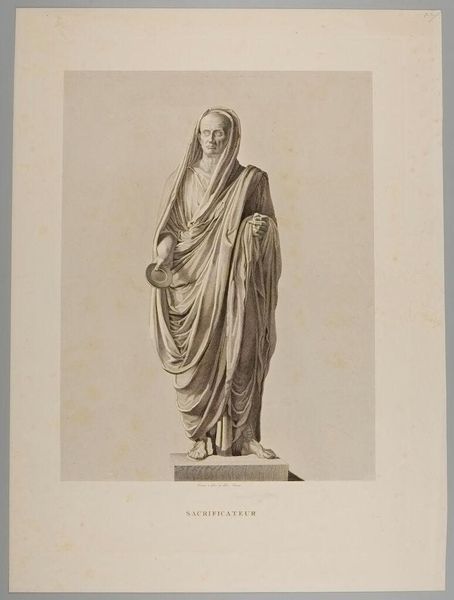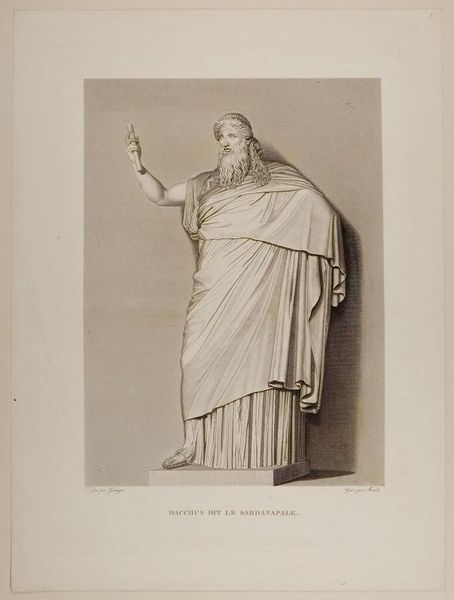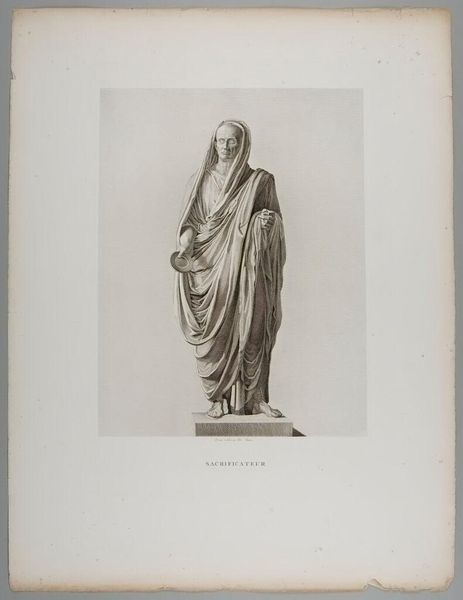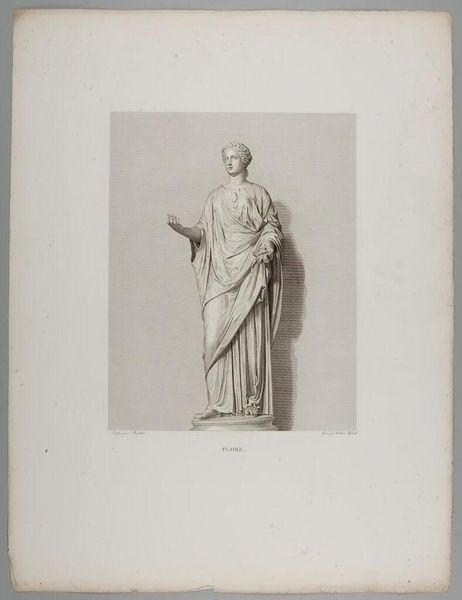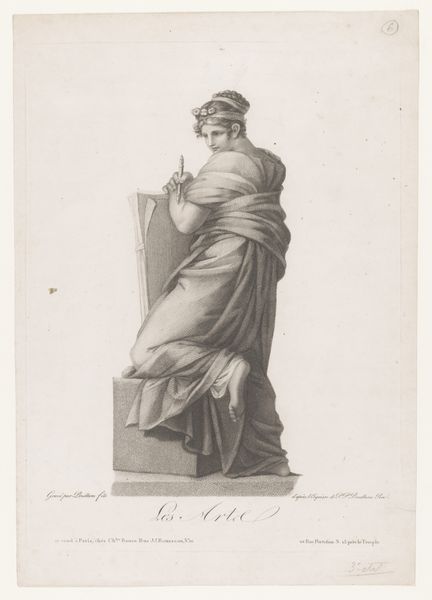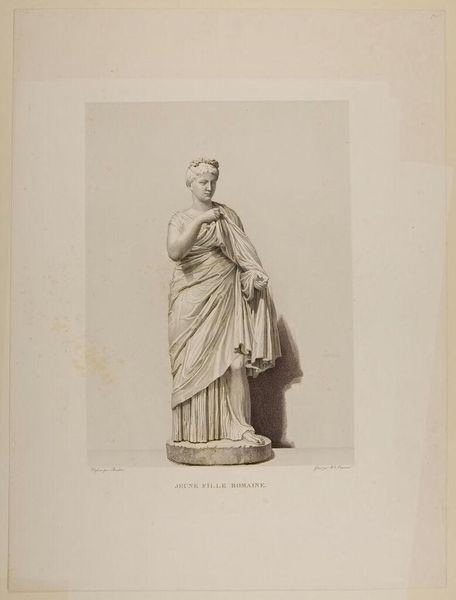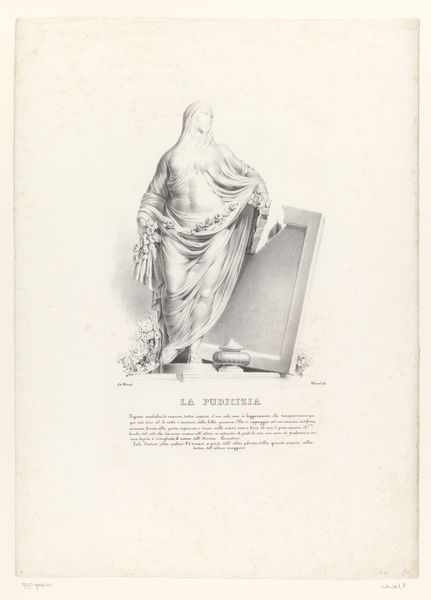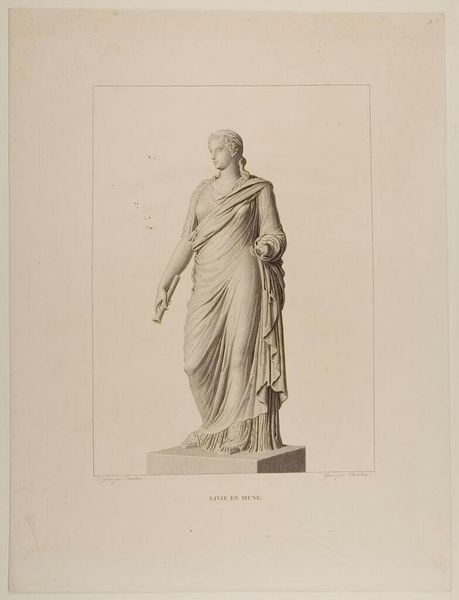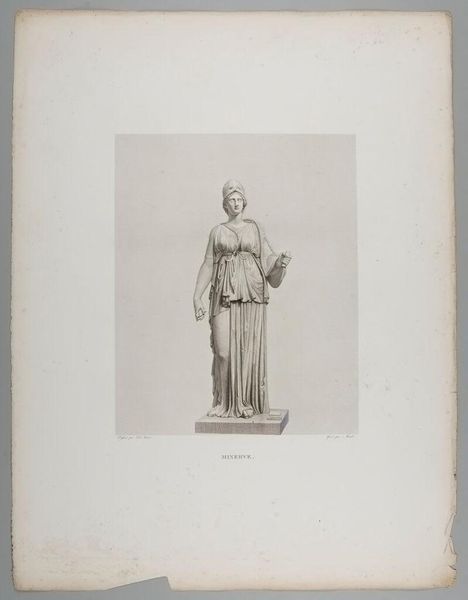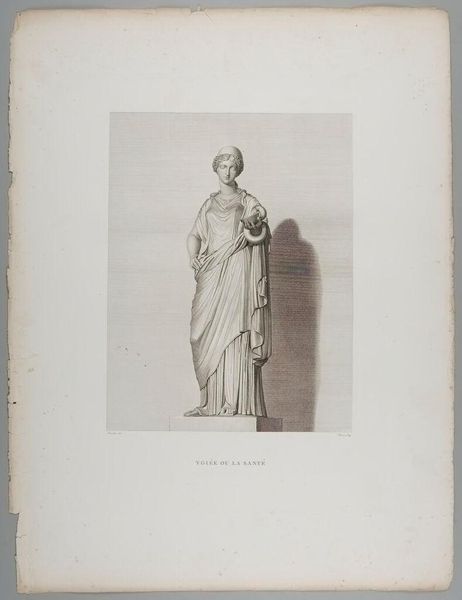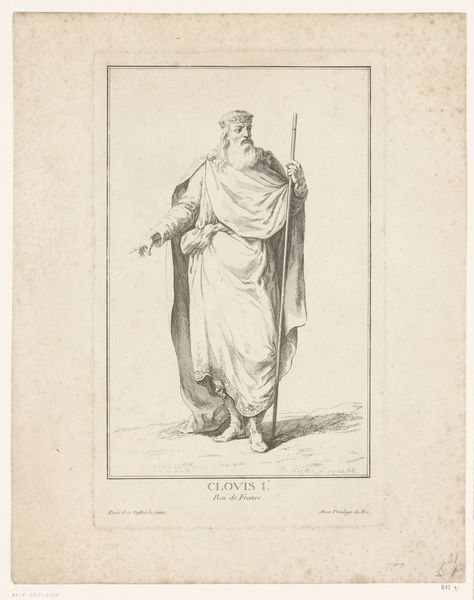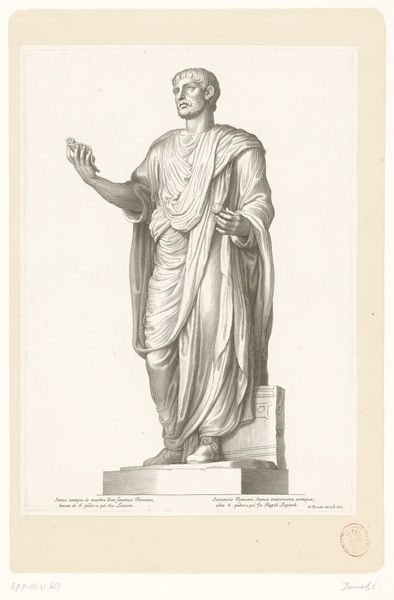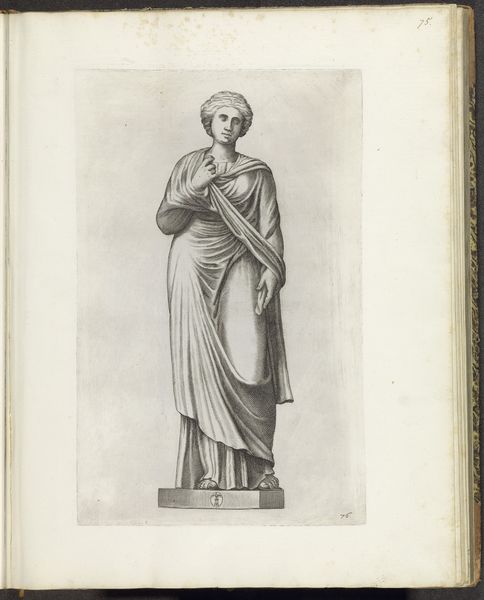
Bacchus, called Sardanapalus, after the Antique c. 19th century
0:00
0:00
Dimensions: 48 x 35 cm (18 7/8 x 13 3/4 in.)
Copyright: CC0 1.0
Editor: This is Antoine Alexandre Morel’s "Bacchus, called Sardanapalus, after the Antique," housed here at Harvard. The figure seems like a classic sculpture, but there's also something a bit ghostly about it. What kind of symbolism do you think is at play here? Curator: Consider the torch Bacchus holds aloft – a beacon, certainly, but a flame also consumes. The antique world echoes through time, but Morel isn't just copying; he's evoking memory. What remnants of the past do you think he wants us to consider? Editor: So, it's not just a reproduction of an old sculpture, but a commentary on history itself? Curator: Precisely! The figure of Bacchus merges with that of the ill-fated Sardanapalus, representing both divine ecstasy and decadent collapse. It is a potent visual symbol about the cyclical nature of civilizations. Editor: That reframing helps me see so much more than a simple classical figure. Thanks! Curator: My pleasure; there’s always a conversation waiting within the images.
Comments
No comments
Be the first to comment and join the conversation on the ultimate creative platform.
